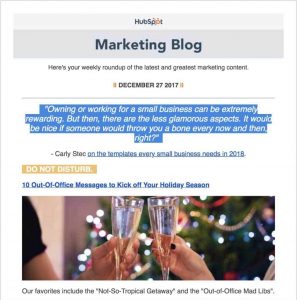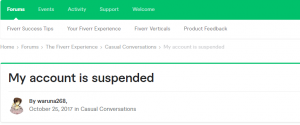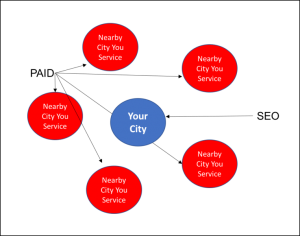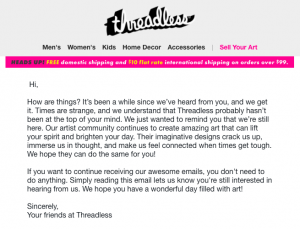This will be the first in a series of posts over the next several weeks. We’ve put together a healthy regimen to help you stay on track and fulfill that New Year’s Resolution of starting your own business. You can expect how-to tutorials on evaluating the viability of your product/service and tips for understanding market demand and interpreting competitive landscapes. By the end of the series, you’ll not only feel prepared to launch, you’ll actually be prepared.
So put your game face on, because you just signed up for small business boot camp! Let’s dive into the first topic: sourcing your product or service idea.
There is a vast amount of opportunity in the ecommerce space. According to Bigcommerce’s bi-annual ecommerce report, online stores brought in more than $ 41 million in revenue in Q4 of 2014, a 54% increase over Q3. This data points to an increase in online conversions, likely due to an increase in aesthetic and convenient omnichannel consumer experiences, including one-step payment processing, responsive websites and social shopping.
Long story short, there’s ample opportunity within the ecommerce space in which to open up shop and start selling. Often, the most difficult part is in figuring out what exactly to sell. This week, the #sellmore video series addresses 9 different ways to generate ideas around products and services to start successfully selling online.
Improve on Fragmented Frustrations
We’ve all heard the saying: necessity is the mother of invention. Taking this tactic when generating ideas for a product or service is a reliable avenue to kick-start a successful business.
Opportunities may exist in a few forms, including an improved product feature, an unrealized market by your competitors or even in your marketing capability. Try tuning into your everyday tasks. What things put a hitch in your giddy up? Those small annoyances can turn out to be a brilliant business idea. Pinpoint a problem and conveniently solve it.
Proof is in the Salad Dressing
Your product or service doesn’t necessarily need to be a huge, complicated endeavor. It can be quite simple, yet exceptionally effective. As an example, look at the story behind Karen Rzepecki’s invention of the reCAP Mason Jars Pour Cap.
“Our story began with salad dressing,” she writes. “After creating yet another oily mess with the lid and ring, I searched for a pour cap that would fit my Mason Jars and allow me to shake, pour, and store dressing.” Rzepecki realized there wasn’t one, so she went ahead and created something all her own.
As many do, Rzepecki used reusable, ecofriendly mason jars for food storage. However, when trying to shake, pour and store items, things got sticky. To alleviate the issue, Rzepecki created a simple lid with a spout that fit both large and small mouth mason jars and took her new product online. Today, she owns a successful online store and is diversifying her product offering to scale her ROI.
Build on Passion and Experience
Let’s be honest, starting your own business means long hours, likely some rocky terrain and the occasional, if not frequent, sacrifice. Being passionate about what you do will not only help you see the forest through the trees during the hard times, but it will also help you in crafting a brand that speaks to people in a way that is meaningful and engaging.
Putting Love and Life to Work

Dustin Haver and wife Kristin have proven this point. Long passionate about each other, family, traveling and their heritage, this duo combined forces to launch online store Neck Of The Woods, an ecommerce site that combines their personal passions with their areas of expertise.
Kristen already runs a small business of her own called Folk Wellness Co. Dustin, on the other hand, an Art Director who has developed a series of brands you can find on his website Saturday Morning Design. Neck Of The Woods focuses on capturing the essence and culture of various locations within the U.S. by offering children’s clothing designed by local artists, combining business strategy, design, travel and giving back with the couple’s ecommerce efforts.
Craft a Brand that Resonates
Crafting a brand that resonates is particularly important if you are thinking of pursuing a rather competitive ecommerce industry. Crafting a recognizable and memorable brand means you’ll need to complete research and truly understand your target audience. You’ll want to craft a brand that speaks to your potential customers in a way that both resonates and compels them to come back. In other words, you want to build loyalty based on audience identity.
Some great questions to start with here are: how does your target audience like to be addressed? How will you position your product? How will you design your website to communicate your brand and appeal to your potential customers through layout, color scheme and calls to action?
When a Brand Becomes a Lifestyle
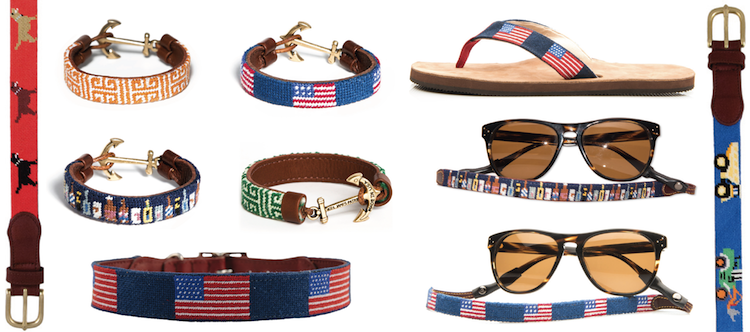
When it comes to crafting a brand and experience that resonates, Matthew Tara of Tucker Blair is an expert. Tara’s goal from the get-go was to focus on his customers, aiming to “…inject some flair into the wardrobe of like-minded people, and especially to my friends and family,” his site states.
Tara promotes the Tucker Blair brand through every single aspect of his business, from ornate needlepoint accessories to detailed and well designed emails and product packaging. At every customer touch point, the Tucker Blair brand creates a memorable and customer identifying experience. By doing so, Tara has crafted a business that not only speaks to its customers, but invites them to be part of a lifestyle.
Hop on Trends Early
Carving out a place for your brand within an emerging market is ideal. To do this, it is pivotal that you stay up-to-date on recent, trending products and services –– and then launch an ecommerce site to capitalize on the trending products before it hits peak popularity.
Indeed, this business angle can be a slippery slope, given that many trends don’t last. However, the upside can be tremendous for a small business owner, given that you’ll have a leg up on SEO and establish yourself as a leader within the industry from early on. Start thinking of products or services that have been trending up in recent years (i.e technology, survival guides, vintage, healthy living, flash tattoos) in order to realize any market potential.
Launch Before the Craze

Serving as proof that launching in the right market at the right time leads to success, online store Fugoo was built on the backs of team members who played integral roles at Acer, eMachines, Harmon Kardon, JBL and Toshiba. These folks are thought leaders by trade and used their skills and industry knowledge to launch the Fugoo Bluetooth wireless speaker at just before the bigger technology brands caught on to the trend.
Fulfill Guilty Pleasures
Another solid business avenue to pursue is helping customers feed into their own passions or, perhaps, even their vices. Shoppers often spend more on their guilty pleasures, developing deep loyalty to particular brands that understand the source of their love for particular items.
Cater to Niche Shopping Obsessed Segments

Niche segments often spell success for ecommerce. Take, for example, Evan Streusand of Fortress of Inca, who sells hand-crafted boots made in Peru that combine quality with tradition.
“Fortress of Inca channels a free-spirited and vibrant lifestyle, while bringing the finest quality leather and woven Peruvian textiles (locally known as ‘mantas’) to each pair of shoes. Each collection features traditional, eye-catching patterns and designs that boast originality, bold colors and intricate detailing.”
Streusand tapped into a deep passion of many online shoppers: handmade, extremely unique apparel.
Bonus: Spot Business Opportunities Absolutely Everywhere
If the above suggestions are not resonating, here are a few steps to use to tap into your daily tasks and find useful solutions to increase productivity.
- Start taking people seriously when they give you compliments. What is it that people tell you you’re great at? Perhaps your family and friends cannot get get enough of your holiday pies? Check out stores like Tiny Pies for inspiration. This brand took a tiny pie concept and turned it into an online store as well as an Austin-based brick-and-mortar.
- Start snooping around websites like eBay, Amazon and Etsy. You’ll be amazed at the simple things being sold on ecommerce websites, including vintage items found at a thrift store, party lights, dog toys, table cloths, decorative pillows and wedding decor. Speaking of wedding decor, check out Wedding Chicks, an online store which turned their blog into an entire business.
- Think about a new spin for old items. Even just giving something a new paint job can turn a $ 5 item into a $ 50 gem. From belt buckles, to guitar picks and back again. Check out the angle Bread & Jam took on standard items you’d likely find anywhere, turning them into treasured pieces.
- Consider impulse buys or items people buy regularly. This could include items like incense, candles, novelty items and DVDs. Dog for Dog, for instance, took typical products like dog food and treats to a whole new level with donations and, eventually, celebrity endorsements.
Tune in next week to learn how to #sellmore by evaluating your list of ideas to better understand what is realistic, feasible and market-ready.
(376)


